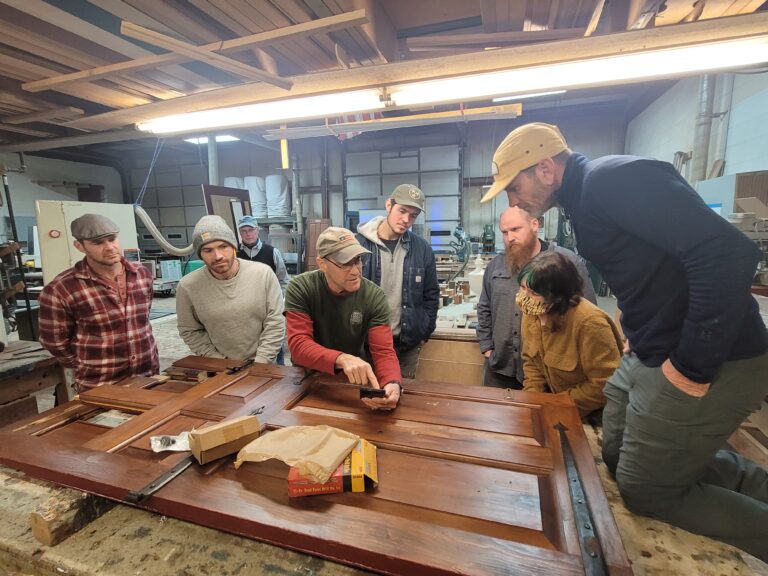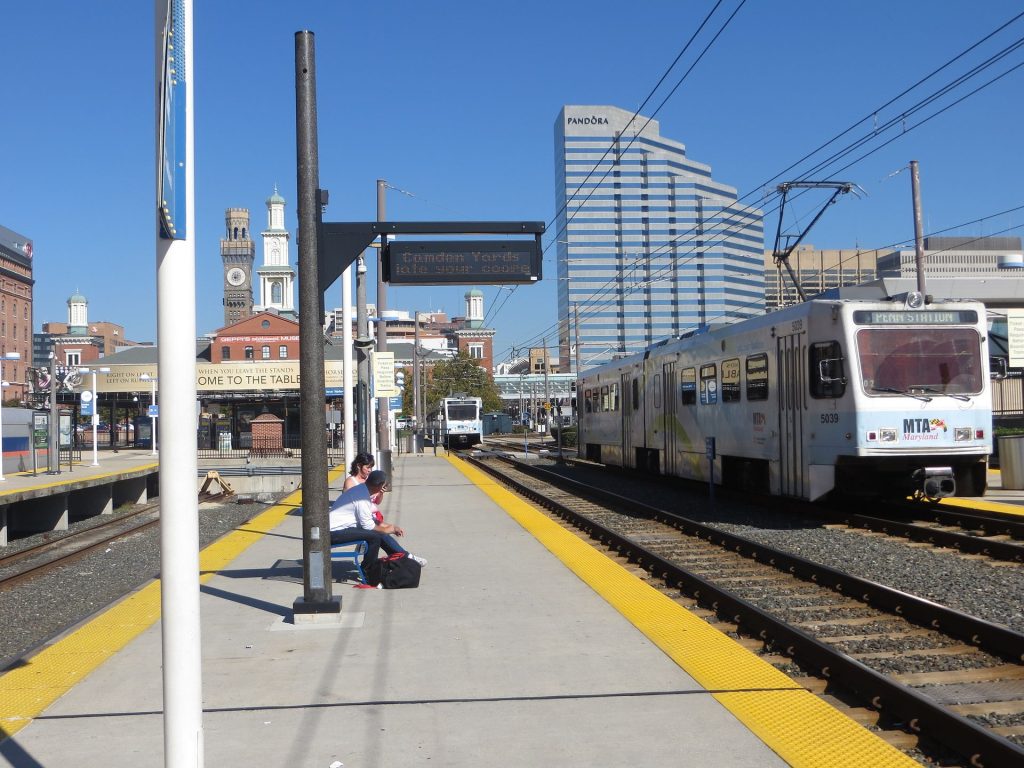Governor Wes Moore has released the Maryland State Plan, outlining how the administration will deliver results for Marylanders on key issues, including multiple priorities that we’ve identified could be addressed, in part, through preservation and smart growth programming.
The plan includes ten overarching priorities, objectives to guide the way, and examples of the types of activities the state will be engaging on to build Maryland’s future. Here are three priorities where we can harness the power of preservation for a better Maryland:
1. CONNECTING MARYLANDERS TO JOBS
“Because our workforce, both public and private, is the key to our state’s future. Study after study tells us the same thing. Every business across the country says their number one factor for relocation, for growing their companies where they are, is a trained and educated workforce. This is not something we need to create from scratch. That workforce already exists. The state just needs to strategically use its assets and resources to unlock its potential.” – Governor Wes Moore
Governor Wes Moore
In his first budget, Governor Moore invested nearly $5 million to the Maryland Apprenticeship Training Program, including $1 million in tax incentives for employers. Governor Moore signed an executive order to promote workforce development in state public works projects which is a national model for the country on how to utilize project labor agreements. Governor Moore also launched new workforce development programs to expand apprenticeships across the state. Key Performance Indicators for this priority include number of active registered apprenticeship programs and number of active apprentices.
How Preservation Maryland is aligned: Registered Apprenticeship is a proven and industry-driven training model acknowledged by the U.S. government that provides a critical talent pipeline to help address some of our nation’s pressing workforce challenges. Employers are able to develop and prepare their future workforce while apprentices obtain paid work experience, receive progressive wage increases, classroom instruction, and a nationally recognized credential.
Late last year our national workforce development program The Campaign for Historic Trades announced the Maryland Department of Labor approved its first-of-its-kind group apprenticeship program for state registration. The program sets standards – including on-the-job learning, related instruction, and core competencies – that provide a clear process for entering the workforce in roles like deconstruction technician, historic window technician, and preservation carpenter. Federal registration is currently in review for approval.

In addition to the new apprenticeship program, The Campaign for Historic Trades is launching an online learning platform to support necessary educational components of Registered Apprenticeships; the functionality of this system will allow training for apprentices as well as interested historic homeowners, aligned professionals (realtors, building inspectors, etc.), and students.
2. MAKING THE STATE OF MARYLAND A DESIRABLE AND AFFORDABLE HOME FOR ALL RESIDENTS
The plan identifies the revitalization of disinvested communities as an objective, particularly across main street districts, aging commercial corridors, neighborhood business districts, and historically inequitable neighborhoods by reinvesting in these areas and prioritizing social, environmental, safety, health outcomes in revitalization efforts in targeted areas.

How Preservation Maryland is aligned: When it comes to assets and opportunities to empower the private sector – rehabilitating and reusing buildings, with a focus on affordable housing, could be a major area of economic opportunity for the state. Maryland’s Historic Revitalization Tax Credit, for which Preservation Maryland is a staunch advocate, is a readymade tool poised to prime the pump for growth across the state. The program provides a 20% credit to qualified historic rehabilitations – a critical need.
Preservation Maryland’s efforts toward this goal have included successfully advocating for an additional historic tax credit for projects that result in affordable housing, as well as grant awards to community groups, professional conference sessions on affordable housing, adaptive reuse, and our Historic Property Redevelopment project 417 Jonathan Street, which is now home to first-time homebuyers, succeeding in the project’s mission of utilizing preservation to provide owner-occupied affordable housing. Not only is adaptive reuse an efficient use of resources, it also has a catalytic effect in revitalizing neighborhoods.
3. ADVANCING INFRASTRUCTURE TO BETTER CONNECT ALL MARYLANDERS TO OPPORTUNITIES AND EACH OTHER
One of the main objectives here is leveraging infrastructure to bolster inclusive economic growth. In addition to inclusivity, the plan also mentions climate-friendly and equitable infrastructure development. Our Smart Growth program advocates for a more environmentally and economically sustainable future that creates opportunities for all Marylanders through better development patterns, including transit-oriented development.

How Preservation Maryland is aligned: What does Smart Growth have to do with historic preservation? At first glance the two might seem like very different movements, but a closer look reveals a significant overlap in their strategies and goals, including creating density through infill redevelopment to developing resilient and sustainable communities through adaptive reuse and transit-oriented design.
We all must do our part to move Maryland forward. Preservation Maryland is proud to support Marylanders and our communities through investment, programming, training, and advocacy.
Lead photo: Gov. Wes Moore presents the Maryland State Plan. Photo provided by Office of the Governor.

